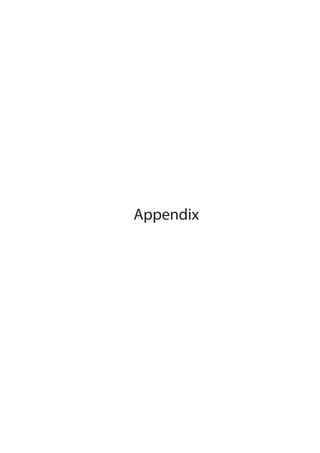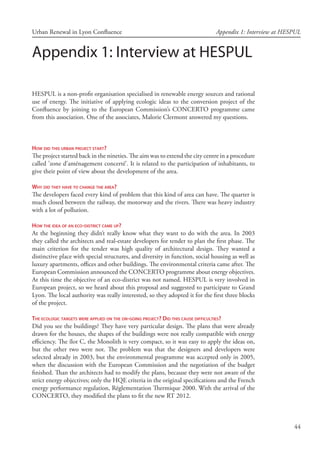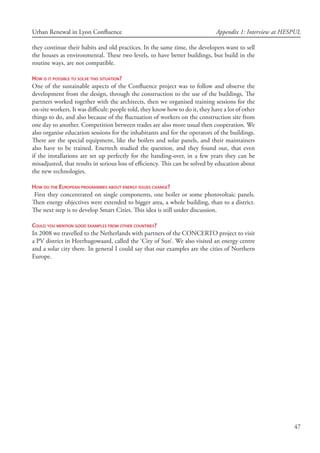This document is a bachelor's thesis exploring the sustainable urban renewal of the Confluence district in Lyon, France. It examines historical developments and the transformation of the area from an industrial site to an eco-district through various ecological principles and strategies. The research emphasizes the importance of sustainability and cooperation among stakeholders in urban planning.
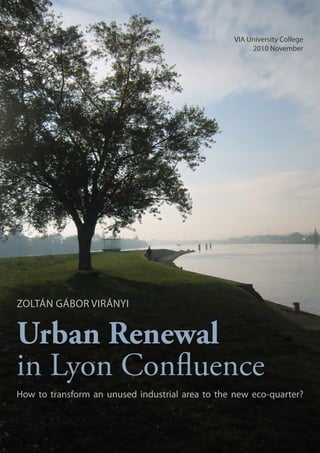

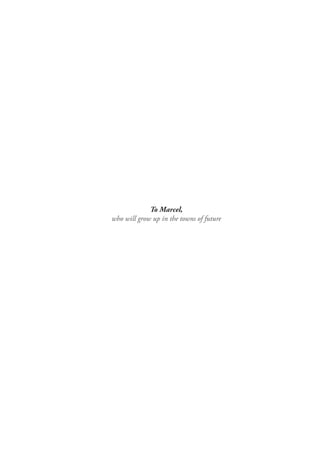

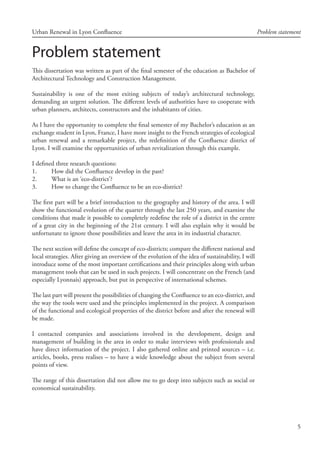
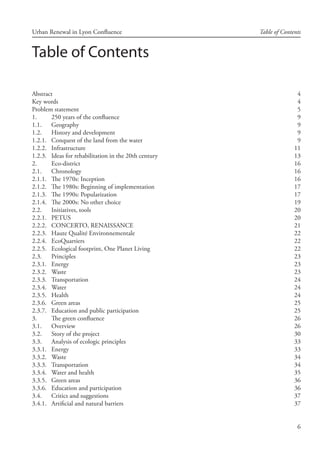

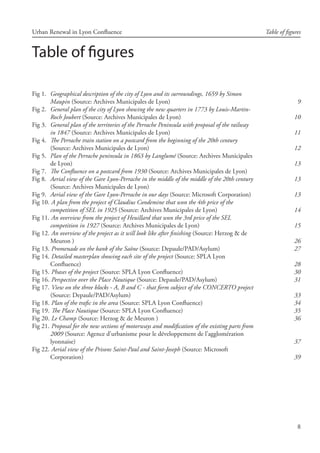
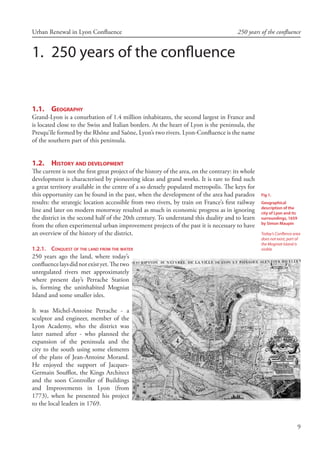
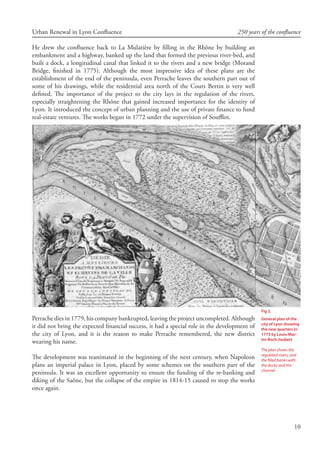


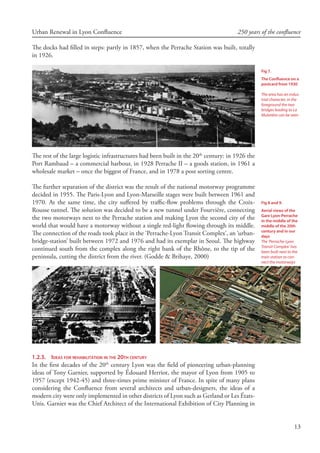
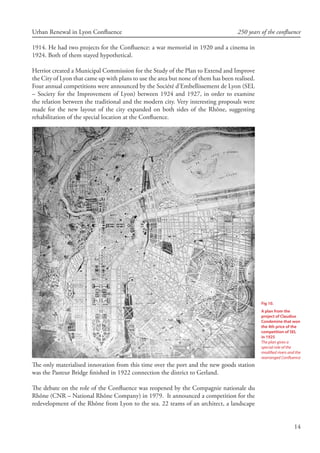




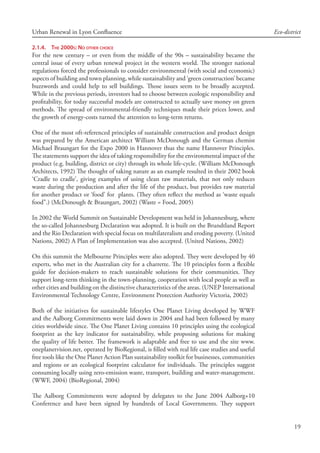





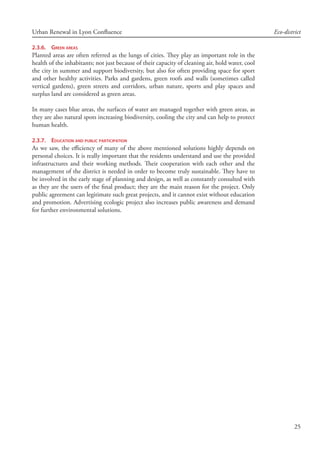




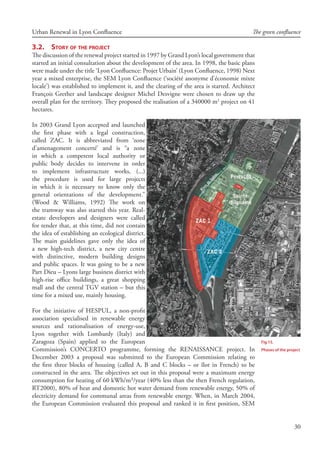
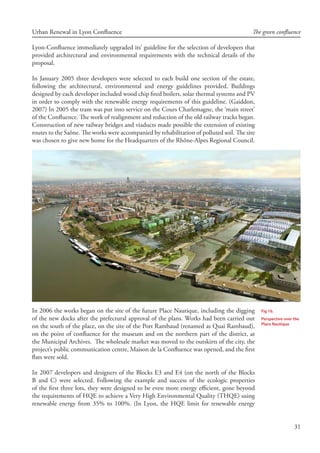



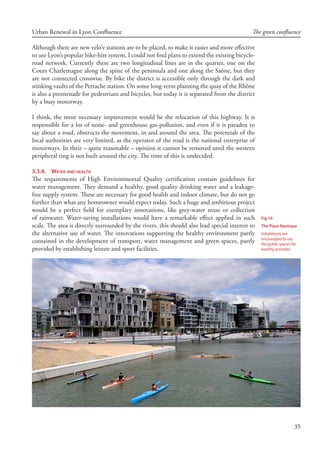

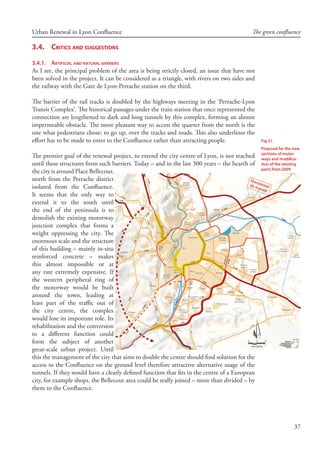



![41
Urban Renewal in Lyon Confluence Bibliography
Bibliography
Books
Ard-Am, O. et al., 2002. Livable Cities - Urban Struggles
for livelihood and sustainablity. Bekley, Los Angeles and
London: University of California Press.
AS.Architecture Studio, 2009. La ville écologique - The
ecological city. Translated by N. Hargreaves. Brussels,
Belgium: Archives d’Architecture Moderne.
Baylis, J., Smith, S. Owens, P., 2008. The globalization of
world politics: an introduction to international relations.
4th ed. Oxford: Oxford University Press.
Beatley,T., 2000. Green Urbanism: Learning from European
Cities. Washington, DC: Island Press.
McDonough, W. Braungart, M., 2002. Cradle to
Cradle: Remaking the Way We Make Things. New York:
North Point Press.
Souami, T., 2009. Écoquartiers - Secrets de fabrication.
Paris, France: Les Carnets de l’Info.
Viard, J. Rollin, U., 2006. Éloge de la mobilité: essai
sur le capital temps libre et la valeur travail. Éditions de
l’Aube.
Wackernagel, M. Rees, W.E., 1996. Our ecological
footprint: reducing human impact on the earth. Gabriola
Island, BC: New Society Publishers.
Articles
Bidou, D., 2006. The HQE approach: Realities and
perspectives of building environmental quality.
Management of Environmental Quality: An International
Journal, Vol. 17(Iss. 5), pp.587-92.
Buhler, T., 2010. Sustainable mobility in Lyon: should
we hang private car drivers? TeMA Trimestrale del
Laboratorio Territorio Mobilità e Ambiente, Vol 3(No
1), pp.21-28.
Cremasco, V., 2007. Sustainability Tools Dedicated
to Urban Infrastructure: The Existing and the
Distinctiveness of PETUS. Indoor and Built
Environment, Vol. 16.(Issue 3.).
Godde, Y. Brihaye, P., 2000. Lyon 2e arrondissement,
Confluent - Secteur urbain dit Presqu’île Perrache, puis
Derrière les voûtes. [Online] Available at: http://www.
culture.gouv.fr/culture/inventai/itiinv/lyon-confluent/
dossiers/ia69000215.html [Accessed 2010].
Jensen, J.O. Elle, M., 2007. Exploring the Use of Tools
for Urban Sustainability in European Cities. Indoor
and Built Environment, Vol. 16(Issue 3).
Osborne, H., 2006. Stern report: the key points. Guardian.
co.uk. Available online at: http://www.guardian.co.uk/
politics/2006/oct/30/economy.uk.
Reports
Aalborg Commitments Secretariat, 2004. Aalborg+10 -
Inspiring Futures. [Online] City of Aalborg Available
at: http://www.aalborgplus10.dk/media/pdf2004/
finaldraftaalborgcommitments.pdf.
Council of Europe, 1993. The European Urban Charter.
Strasbourg: Council of Europe, Publishing and
Documentation Service.
Council of Europe, 2009. Manifesto for a new urbanity:
European Urban Charter 2. Strasbourg: Council of
Europe Publishing.
Council of the European Union, 2006. Renewed EU
Sustainable Developpment Strategy. Brussels: European
Council’s General Secretariat.
European Commission, 2006. Thematic strategy on the
urban environment. Brussels: Commission of the
European Communities.
IUCN, UNEP, WWF and UNESCO, 1980. ISBN
2-88032-104-2 World conservation strategy: living
resource conservation for sustainable development.
International Union for Conservation of Nature and
Natural Resources.
Meadows, D.H., Meadows, D.L., Randers, J. Behrens,
W.W., 1972. The Limits to Growth. New York: Universe
Books.
Scheurer, J., 2001. Urban Ecology, Innovations in Housing
Policy and the Future of Cities: Towards Sustainability in
Neighbourhood Communities. PhD Thesis. Murdoch:
Murdoch University Institute for Sustainability and
Technology Policy.](https://image.slidesharecdn.com/dissertationzoltangviranyi-140726025814-phpapp01/85/Urban-Renewal-In-Lyon-Confluence-41-320.jpg)
![42
Urban Renewal in Lyon Confluence Bibliography
Stern, N., 2007. The Economics of Climate Change - The
Stern Review. Cambridge: Cambridge University Press.
Available online at: http://webarchive.nationalarchives.
gov.uk/+/http://www.hm-treasury.gov.uk/
Independent_Reviews/stern_review_economics_
climate_change/sternreview_index.cfm.
U.S. Energy Information Administration, 2010. ISBN
0160833914 Annual Energy Review 2009. Annual
Report. Washington, DC: Government Printing
Office U.S. Energy Information Administration.
Online: http://www.eia.doe.gov/emeu/aer/pdf/aer.pdf.
UN General Assembly, 1992. Agenda 21. Rio de Janeiro,
1992. UNCED.
UN General Assembly, 1992. Rio Declaration on
Environment and Development. Rio de Janeiro:
UNCED.
UNEP International Environmental Technology Centre,
Environment Protection Authority Victoria, 2002.
Melbourne principles for sustainable cities. In
International Charrette held in Melbourne on Building
Urban Ecosystems. Melbourne, 2002. United Nations
Environment Programm, Division of Technology,
Industry and Economics.
UNFCCC secretariat, n.d. Kyoto Protocol. [Online]
Available at: http://unfccc.int/kyoto_protocol/
items/2830.php [Accessed 2010].
United Nations, 2002. Johannesburg Declaration on
Sustainable Development. In World Summit on
Sustainable Development. Johannesburg, 2002.
United Nations, 2002. Plan of Implementation of the
World Summit on Sustainable Development. In World
Summit on Sustainable Development. Johannesburg,
2002.
William McDonough Architects, 1992. The Hannover
Principles - Design for Sustainability: Prepared for
EXPO 2000, the World’s Fair, Hannover, Germany.
Charlottesville, VA: William McDonough Architects.
World Commission on Environment and Development,
1987. ISBN 0-19-282080-1 Our Common Future.
Oxford: Oxford University Press United Nations.
AKA Brundtland Report.
Press realises
Lyon Confluence, 1998. Lyon confluence 1998-99: projet
urbain - Strategy for urban renewal. Lyon: Communauté
urbaine de Lyon.
Maison de La Confluence, 2010. La Confluence - Vivre
Lyon en cœur. [Online] Available at: http://www.la-
confluence.fr/ [Accessed 2010].
Mandag Morgen, 2007. Copenhagen Agenda for Sustainable
Cities. [Online] Available at: http://www.realdania.
dk/Projekter/Byggeriet/Copenhagen-Agenda.aspx
[Accessed 2010].
OrganisationforEconomicCooperationandDevelopment
(OECD). Environment Directorate, 2006. Fact Sheet :
Extended Producer Responsibility. Paris: OECD.
Websites
Association HQE, n.d. Association HQE: Présentation
générale. [Online] Available at: http://assohqe.org/hqe/
[Accessed 2010].
BioRegional, 2004. One Planet Vision. [Online]
BioRegional Available at: http://www.oneplanetvision.
org/ [Accessed 2010].
Cittaslow International, 2009. Cittaslow International.
[Online] Available at: http://www.cittaslow.org.
Dansk Arkitektur Center, 2008. Sustainable Cities.
[Online] Available at: http://sustainablecities.dk/
[Accessed 2010].
Ministère de l’Écologie, de l’Energie, du Développement
durable et de la Mer, 2010. EcoQuartiers -
Developpement Durable. [Online] Available at: http://
www.ecoquartiers.developpement-durable.gouv.fr.
Reichmann, B. Schuchardt, M., 2001. SURBAN -
database on sustainable urban development in Europe.
[Online] Available at: http://www.eaue.de/winuwd/79.
htm [Accessed 2010].
WWF, 2004. The 10 principles of One Planet Living.
[Online] World Wide Fund For Nature Available
at: http://wwf.panda.org/what_we_do/how_we_
work/conservation/one_planet_living/about_opl/
principles/.
Film
Waste = Food. 2005. [Online] Directed by Rob van
Hattum. Available Online at: http://www.docsonline.
tv/Archives/description.php?doc=229.](https://image.slidesharecdn.com/dissertationzoltangviranyi-140726025814-phpapp01/85/Urban-Renewal-In-Lyon-Confluence-42-320.jpg)
